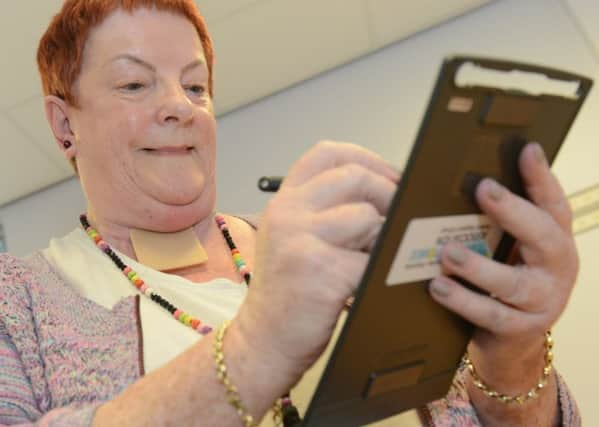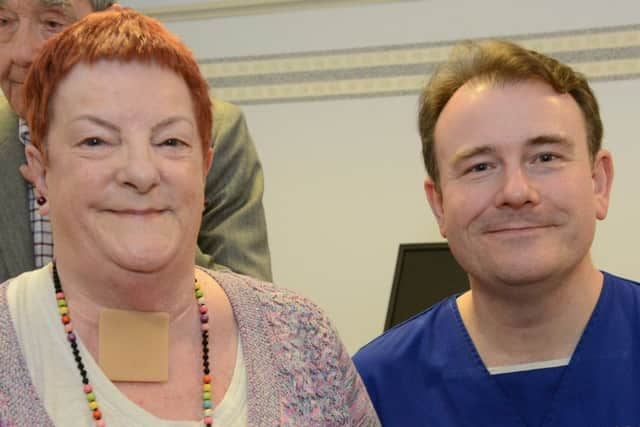Boogie board helps give cancer patients a voice


Kim Winterton, 73, who lives in Eccleston, near Chorley, had to undergo surgery to remove her voice box after being diagnosed with cancer near her vocal cords seven years ago.
Kim, who is now the secretary of the The Preston and Chorley Laryngectomee Association, had been suffering from a sore throat and a raspy voice so sought medical help, and was told she had cancer lying near her vocal cords and that the only option was surgery.
Advertisement
Hide AdAdvertisement
Hide AdPeople who have had a laryngectomy are called laryngectomees and have no vocal cords. They have to have their larynx, or voice box, removed, and they have to breathe through a hole in their neck.


However, many of them learn to speak again through different voicing techniques, with the majority having a valve inserted into their neck and having a button which they press when they want to speak.
Kim uses oesophageal speech, which is a method of speech production that involves oscillation of the oesophagus, the tube which takes food from a person’s mouth to their stomach.
Air is injected into the upper oesophagus and then released in a controlled manner to create sound used to produce speech.
Advertisement
Hide AdAdvertisement
Hide AdOesophageal speech is a learned skill that requires speech training and much practice. Because of the high level of difficulty in learning oesophageal speech, some patients are unable to master the skill.


Kim explains: “I basically take a breath and then push the air up and then open my mouth and hope words come out!
“However, there are some people who do not have a voice at all after having their voice box removed.”
The Preston and Chorley Laryngectomee group has donated some “Boogie Boards” and an iPad to Lancashire Reaching Hospitals to help people communicate following laryngectomy surgery.
Advertisement
Hide AdAdvertisement
Hide AdThere are almost 100 Laryngectomee clubs nationwide and they offer a range of support services to help laryngectomee patients, their families, and their carers.
The most common reason for having a laryngectomy is a cancerous tumour of the voice box.
A “Boogie Board” works like a digital blackboard or a tablet.
They cost £33 each, and the Laryngectomee Club has donated six to Lancashire Teaching Hospital’s speech and language therapy team.
Advertisement
Hide AdAdvertisement
Hide AdThe “Boogie Boards” were paid for via three awareness sessions which were funded by The University of Central Lancashire.
The iPad itself was donated by Macmillan Cancer Support.
Kim says: “These boogie boards are absolutely brilliant.
“They come with little pencils and you write things like: ‘Please can I have a cup of tea?’ on them and then it just wipes off.
“At the group, we know what it is like to have no voice and there are some people who don’t have a voice.
“These boards are a tool for talking and are a great device to give people with no voice a way of communicating.”
Advertisement
Hide AdAdvertisement
Hide AdLouise Stevens, speech and language therapist at Lancashire Teaching Hospitals NHS Foundation Trust, says: “We are delighted to receive this equipment which will make such a difference to the lives of our patients.
“We want to say a big thank you to everybody at the Preston and Chorley Laryngectomee club for this kind donation.”